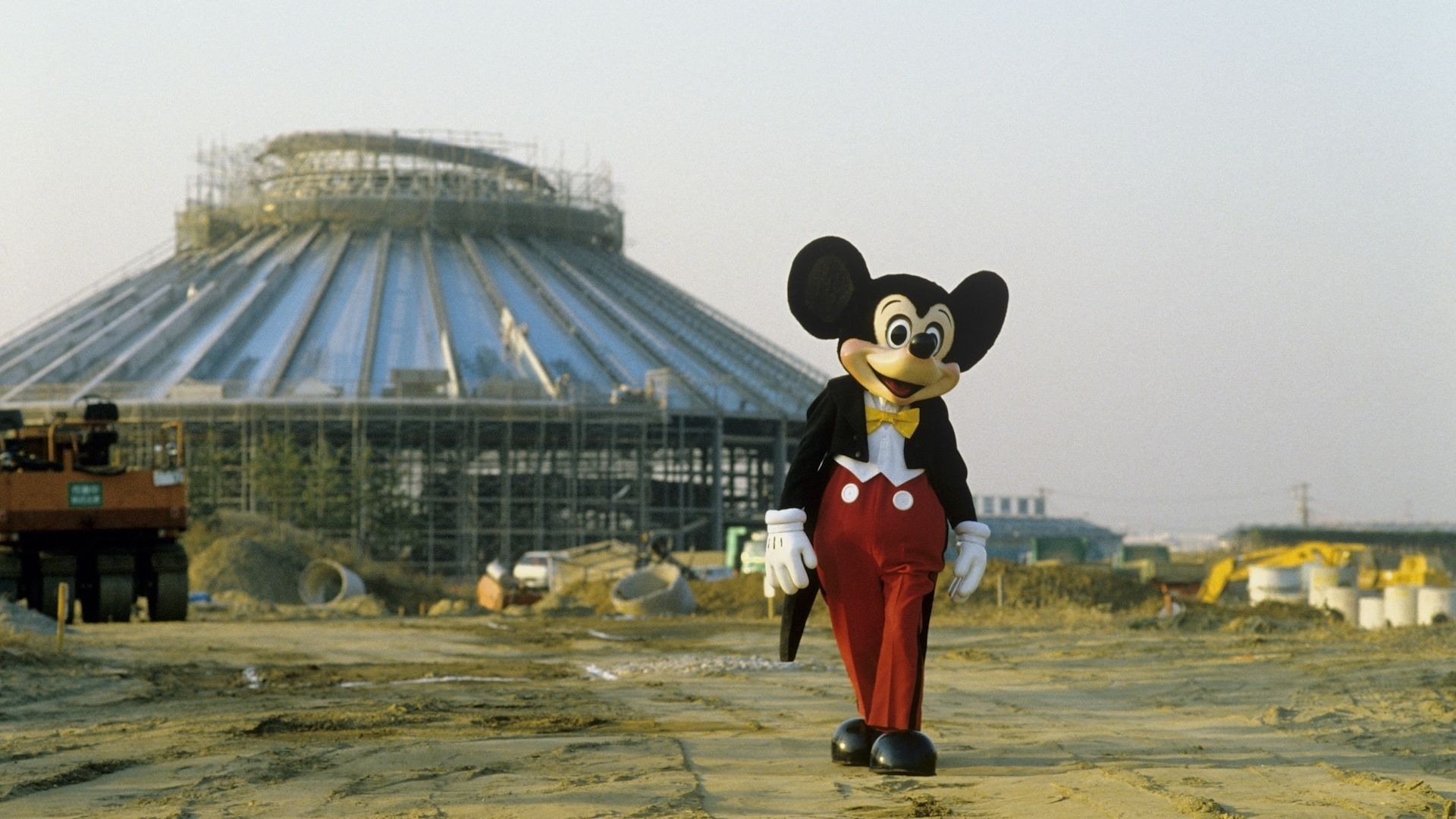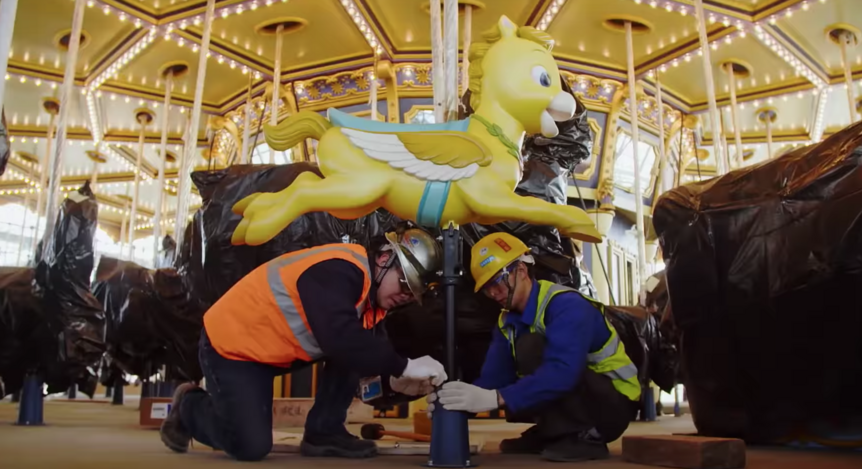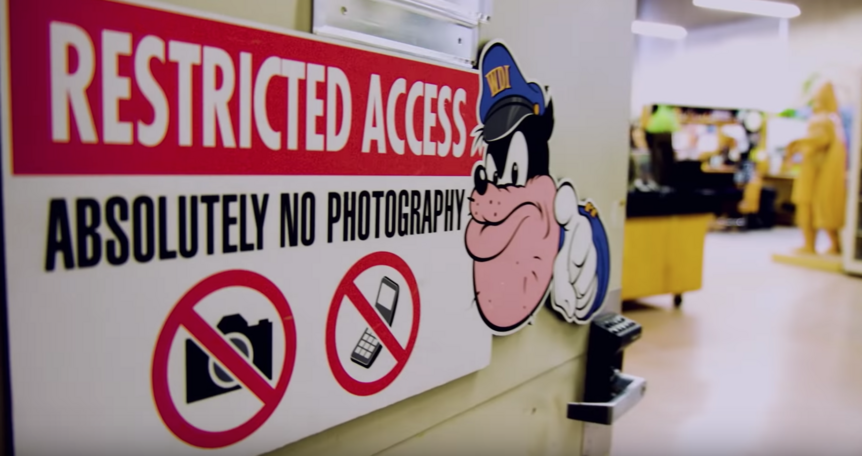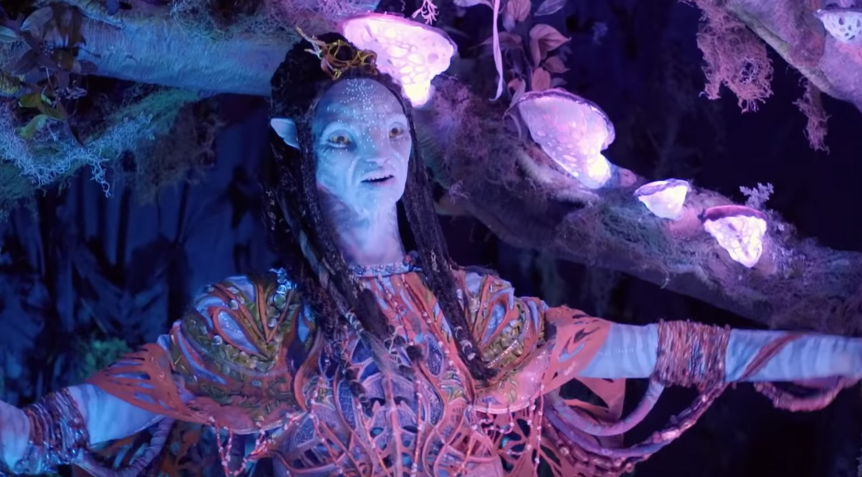Create a free profile to get unlimited access to exclusive videos, sweepstakes, and more!
Inside Disneyland's secrets, rumors, and myths with The Imagineering Story

If you're looking for an excuse to sign up for Disney+ (or are maybe just searching for a reason to get even more excited about Disney's new direct-to-consumer streaming platform), then let it be The Imagineering Story, Leslie Iwerks' beautiful and illuminating 6-part documentary about Walt Disney Imagineering. Long considered the most magical (and tightly guarded) division of the Walt Disney Company, Imagineering began life as Walt's black box operation, a unit where he could indulge in flights of fancy and technological experimentation away from the oversight (and financial constraints) of the studio.
Iwerks' documentary charts the history of the unit, from the early, blue sky days developing Disneyland and pavilions for the 1964-65 World's Fair, through the construction of Walt Disney World and Epcot, right on through to the opening of Shanghai Disneyland and the Star Wars: Galaxy's Edge themed lands. And if you think you've seen it all, you haven't. There's a moment, early in the series, where Bob Gurr, one of Walt's Imagineers who was responsible for the Disneyland Railroad and first Disneyland Monorail, walks us inside the Matterhorn, to the mythical basketball court housed inside the attraction. It's a jaw-dropping moment in a series full of moments like this.
SYFY WIRE sat down with Iwerks, whose father was an Imagineer responsible for pioneering the 360-degree CircleVision system and helped develop attractions like Captain EO and Star Tours, and whose animator grandfather co-created Mickey Mouse and Oswald the Lucky Rabbit with Walt.
Iwerks spoke about the project's transition from a feature-length documentary (like The Pixar Story, which she also created) to a multi-part affair, if there was anything too taboo for the documentary, and whether or not we'll see more of this particular story on Disney+.
This was originally supposed to be a feature-length documentary film, right? How did you turn it into a series?
The original intent was a 90-minute feature, but it was filming over four years and then editing the last year. So by the time that we got into our fourth year, we had so much material and we had all this archival material and I felt like we had the archives west in Santa Monica with Disney because we had so much material. And so now we had to craft this whole story. I had done this narrative outline with Marty Sklar before he passed away. He and I had worked out what the basic beats and story points are and who are the people that really needed to be highlighted and what were the most important things. So I had that roadmap to go on, so we really just expanded on that. And then we delved into different attractions and with the interviews, you know, it originally was, "just document our golden age right now" and "let's just start getting footage."
But then as I started interviewing, I said, "Okay, well we need to get all these historical interviews too. We've got to get, Alice Davis and anyone that's really key to a big story. So we did. By the time Disney+ came in, we had a six-hour cut and it was six episodes and I had already pitched it to Disney. I had gone back to Imagineering and I said, "We've spent a year editing this. We think that it could be better served as a multi-part series because you have so much stuff that's going to hit the cutting room floor."
We had already gone from 90 minutes to six hours, so to get it back [to feature-length] was going to be tough. And it was going to be painful and I felt like it was actually more cost-effective to put a little bit more money in and get a lot more bang for your buck. And so that's ultimately what they did.
Was there anything that you did leave on the cutting room floor that you wish were still in it?
There's a lot of little details and things that we had to mince out on the way, but I think that the lion's share of the filming was actually in Shanghai building that park. We had thought that it was going to be one whole hour on the making of Shanghai Disneyland. So I went back every year and documented and went behind the scenes and followed up on specific people and how they were progressing in it. And it was always stressful — from dirt to completion. And that was really fun to keep tracking, because it was in construction for so long and it was really in the last year that it all came together. You could really see elevation starts to happen. It happens quick. And then all the facades come in and then this show installation and everything else.
So there was a lot to film in the last year that was everyone's in a race to get it done. And so that was really fun to actually document and we crafted that one hour cut. But when we started reshooting on other things like verite for the film and inside attractions and more taking us behind the scenes, it expanded it. So then we just had too much on Shanghai, you know what I mean? It would have been too weighted.
At one point we experimented with actually starting each episode with the evolution of Shanghai. It didn't hook you enough because you didn't know where you were headed and not a lot of people in America are that familiar with Shanghai. It was sort of banking on the fact that they would actually be really interested in holding to the opening every single time and knowing those characters and wanting to come back to them and then we're off to the history. It actually just felt better just to stay in the narrative flow of the whole thing.
Did this process sort of change your outlook on what Imagineering was? Obviously you knew about Imagineering from your father, but did this change your perception at all?
Yeah, for sure. Of course, as a kid, I'm, you know, behind the scenes running around the backlot and Disneyland and everything like that. So I had a different impression and I got a certain sense from my dad about what went into a lot of things. However that innovation has always been part of our family system, so to me, it was an extension of what I grew up around.
But then to have the immersion that I did and to have the trust from the studio and from the Imagineers to say, "Yeah, come on in, you're part of the family, we want you to tell the story and we're going to show you all these cool things and we trust you to figure out how to put it all together." And that was fun. And I think I just, as far as what I learned, I learned so much. It was like getting a degree in all these different disciplines, over five years, from a top-level.
How much convincing did it take to get this kind of access?
It didn't. I had shown The Pixar Story at Imagineering way back in late 2013 and Marty was there and he said, "When are you going to do The Imagineering Story?" And I said, "You tell me. I'd love to." And so that's how that happened. So it went from a 90-minute film to be shot and created in about a year-and-a-half to them coming back to me and saying, "Actually, we want to commission you for five years and you're going to go to all the parks around the world and you're going to document all these cool things. We've all these new openings happening and you can document how they're doing stuff." And so that's what happened.
Was there anything off-limits?
Nothing really. We didn't really focus on where people went after they left Imagineering. I felt like that was a whole different story. This is really about the Imagineers, how they started and the DNA that Walt infused in people and into the company that has lasted all these decades. And I think to me that was the core of the story and you know that that idea of let's create the happiest place on earth, the flip side of that is creating happiness is hard work. And that's what this film is about.
What is your take on Imagineering today?
What I find interesting is that if you look at the whole evolution of it today, it's based on so many things that happened before. There's a number of sections in the film of attractions or theme parks that never happened. There's a lot of energy spent on dreams that ultimately get shelved. And that's what you kind of go, wow, they spent years on Westcot that never, that never made it. There are real-life disappointments and as a creator and really understanding the creative spirit and hearing all these guys and these gals talk, they're so vested, they're so interested in building something that's gonna make people happy and then for some economic reason or whatever else, the whole thing gets shelved. So that to me was the human story is that emotional attachment to ideas.
One thing that shocked me was that these Imagineers didn't really write anything down until they were developing Tokyo Disneyland. Was there something that you uncovered during your research that really surprised you?
I think it's really funny when you think about the building of Disneyland. He gave the Imagineers one year and that to me, and I showed this for the Imagineers a couple of weeks ago, sort of the debut screening. And everyone laughed at that, which I thought was great because no one can build a theme park today in one year. But that was the magic of that time. There were not as many rules and regulations and protocols and permits. So that was the fun part. When you look back on it you go, "Good God, those are the innocent days, now is a lot harder." And now there are a lot more meetings.
Bob Gurr would say, "I'd go into Walt's office and he says he wants to build a monorail." And he says, "Can you do it?" And he said, "Yeah, I can do it." And Walt goes, "Great, go do it." And he says, it was one meeting.
The other thing is that you never said no to Walt. And my dad said the same thing. Like if Walt came with an idea for something and like he would with my grandfather in the hallway, you'd say, "Yeah, we can figure it out." Even though you might not know the answer right then it was always this can-do attitude. And that was really cool. That was really inspirational.
Over time, the way things get complicated is that there are so many meetings and there are so many things that happened that that initial joy of just yes, we can get mired down. But I have to say that the measuring spirit, like with Star Wars: Galaxy's Edge, those guys are such big, rabid fans of Star Wars that for them to do this was a huge honor. And so they just wanted to give it everything they could. And maybe you'd have 10, 15 meetings for one thing because you just wanted it to be perfect. It's different. It's not like it's politics. It's about making it perfect.
It's interesting watching this and reading Bob Iger book that just came out and says again and again, "I'm not a creative." But you had Eisner, who was somebody who really considered himself a creative and got in there with those guys. Did you sort of see a transition between those two periods in Imagineering and as I'm assuming that'll be covered in the documentary?
Yes. I interviewed Eisner and Iger. I think Eisner was creative actually. I think he infused huge amount of creativity in the company when he came in and he and Frank Wells, they were huge champions of Imagineers and that was at a time when Imagineering was at its low point and they didn't think they had a champion. And these guys come in and they just infused all this energy into it and they're green-lighting things left, right and center. All of a sudden there was just like creativity bonanza. Some of that was a golden age right there of new technology.
I remember, you know, as a kid, uh, when Captain EO came out, I was on set. I was there when Michael Jackson was filming and my dad was involved in creating that camera system. It was one of the biggest 3D camera systems ever made. It was also the most expensive film ever at $1 million a minute. And I just remember sitting there with this whole scene and Michael Jackson dancing down and the music and then they'd say, "Cut," and then we'd go back to dailies and I'd sit in front of Michael and Francis Ford Coppola and watch the dailies with my dad sitting next to me. And I'm just like a little kid going, "Wow, this is so cool." And that era of Michael Eisner was just really exciting because he was all about the business bringing in celebrity and outside IP, which was taboo prior to that. But it was like, no, it's a fresh take. It's a fresh perspective. People liked it. He raised ticket prices. I mean, it was just like everybody came.
Do you have a favorite Disney attraction or a theme park?
I would say my favorite Disney attraction back in the day and today is Pirates of the Caribbean. I like the original and I like the new one in Shanghai.
Is there any possibility of you coming back to this subject or to do additional episodes?
I hope so. This is my passion project, so I'm in as long as they want to keep making.
Is there, is there enough material to do additional episodes from the stuff that you've already shot?
Yeah. There's a project that, uh, along this line that we haven't announced yet, so you'll be seeing a lot more of the material we've already done.
Was there anything that you wished you could have covered but just didn't get around to it? Or nobody goes around to talk about it or, or anything like that?
Oh, that's a good question. There's a lot of people that are deceased that I would have loved to have interviewed. What would I have loved to have done more of? Well, okay, I'll tell you one of my loves is animatronics. So if I could do one whole episode, I don't know whether people would be into it or not, but I would, because I'm a total geek. I would love to do the whole evolution of animatronics. I think I had to really look at it as slices and say, okay, what's the evolution of animatronics? You see one evolution here and then you go to this attraction at this park and you see the evolution go there and then it's evolved over in this one. So it'd be fun to document the evolution of one narrative thing across all the parks.
Do you have a favorite animatronic?
Well, I'll have to say the original Lincoln, cause my dad's hand was Lincoln's. And that was the state of the art of course. But the new Navi figure is incredible.
Was there somebody who you thought you weren't going to get and ended up getting for the documentary?
Well, I had hoped that we would get all the Imagineers, but I really did enjoy interviewing Jane Goodall. So I was happy that she, she interviewed with us. She's a big supporter of Joe Rohde and the team behind Disney's Animal Kingdom and their intentions behind that park. It was a controversial park. It still is. It's amazing that they did it.
The Imagineering Story premieres, with the rest of Disney+, on November 12.

















